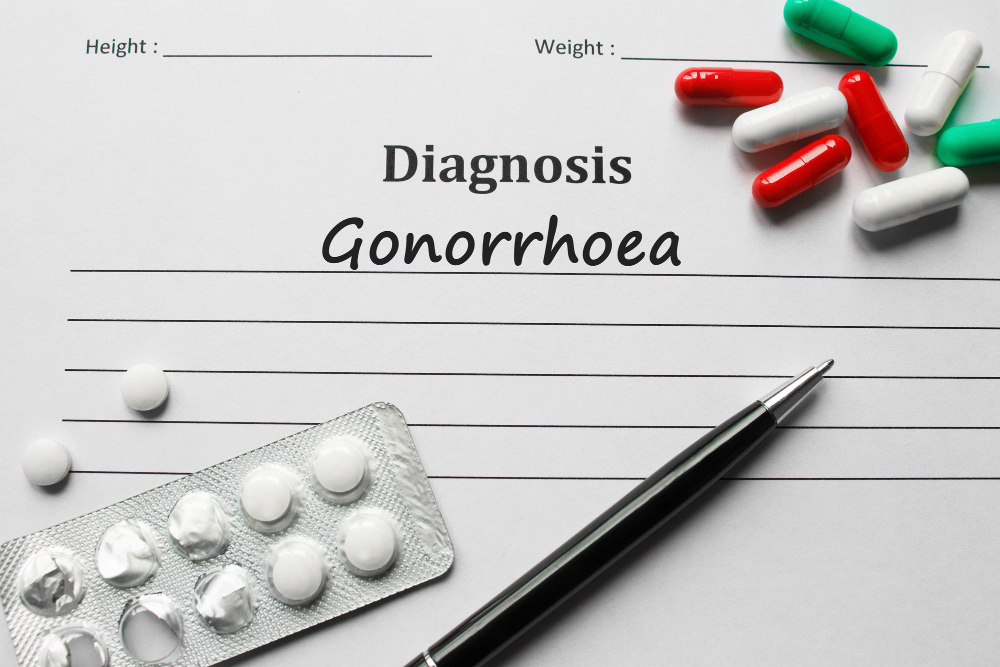General Health Tips & News
Gonorrhoea
By H.S. (staff writer) , published on March 01, 2022

Medicine Telehealth Health
Gonorrhoea is a sexually transmitted disease (STD) that can infect men and women. Infections of the genitals, the rectum, and the throat have been reported. It is a prevalent disease, particularly among young individuals between 15 and 24.
How does gonorrhoea get its start?
It is possible to get gonorrhoea through intercourse with someone who has gonorrhoea, oral, anal, or vaginal. If a woman has gonorrhoea while pregnant, she risks infecting her unborn child.
What can be done to lower the risk of gonorrhoea infection?
Only by abstaining from vaginal, anal, or oral intercourse can one prevent contracting an STD.
If you engage in sexual activity, you may reduce your risk of contracting gonorrhoea by:
A long-term, mutually monogamous relationship with a partner who has been tested and found to be free of sexually transmitted diseases
Gonorrhoea symptoms
There is a 2- to 14-day symptom onset window following exposure. Some individuals who get gonorrhoea never show any symptoms, though.
An asymptomatic carrier, or someone who has gonorrhoea but does not show any symptoms, may still transmit the disease. Gonorrhoea is more likely to spread if the infected individual does not show any symptoms.
Symptoms in men
It may take weeks before the symptoms of penile infection become apparent in a person. Some males may never show any symptoms at all.
A week after transmission, symptoms often begin to appear. In males, the most common symptom is scorching or excruciating pain during urinating.
The following symptoms might develop as the condition worsens:
· Penile discharge (or drip) that is pus-like and more frequent or urgent than usual (white, yellow, beige, or greenish)
· A swollen or red penis swelling or discomfort in the testicles
· A painful throat that won't go away
The urethra and testicles might be permanently damaged by gonorrhoea in certain cases. After the symptoms have subsided, the disease will remain in the body for a few weeks.
The rectum may also be affected by pain.
Symptoms in women
Symptoms of gonorrhoea may not be obvious to some persons with a vagina. This makes it more difficult to detect them since they often have minor or comparable symptoms to those of other diseases.
It is possible to mistake gonorrhoea symptoms for other common vaginal diseases, such as yeast or bacteria.
These symptoms include discharge from the vagina, discomfort or burning when peeing, increased frequency of urination, heavier periods, sore throats, pain during sexual contact and acute lower abdominal pain.
Diagnostic tests
Diagnosis of gonorrhoea may be made in a variety of methods. There are several ways to collect fluid samples, such as swabs from the problematic region (penis or vagina) and placing them on a glass slide.
You may be given a sample of fluid from the affected joint, or your doctor may extract blood to rule out an infection of the bloodstream.
The sample will be stained and examined under a microscope after that. Gonorrhoea may be identified if cells respond to the dye. This is a fast and simple procedure; however, it does not guarantee 100% confidence. A lab technician may also do this test.
A similar sample is taken and placed on a plate in a second procedure. For many days, this will be cultured under growth-promoting conditions. If gonorrhoea is present, a colony of gonorrhoea bacteria will develop.
References
1) Chan PA,Robinette A,Montgomery M,Almonte A,Cu-Uvin S,Lonks JR,Chapin KC,Kojic EM,Hardy EJ, Extragenital Infections Caused by Chlamydia trachomatis and Neisseria gonorrhoeae: A Review of the Literature. Infectious diseases in obstetrics and gynecology. 2016;
2) Suay-García B,Pérez-Gracia MT, Future Prospects for {i}Neisseria gonorrhoeae{/i} Treatment. Antibiotics (Basel, Switzerland). 2018 Jun 15;
3) Workowski KA,Bolan GA, Sexually transmitted diseases treatment guidelines, 2015. MMWR. Recommendations and reports: Morbidity and mortality weekly report. Recommendations and reports. 2015 Jun 5;
4) Unemo M,Shafer WM, Antimicrobial resistance in Neisseria gonorrhoeae in the 21st century: past, evolution, and future. Clinical microbiology reviews. 2014 Jul;
5) Unemo M,Shafer WM, Antibiotic resistance in Neisseria gonorrhoeae: origin, evolution, and lessons learned for the future. Annals of the New York Academy of Sciences. 2011 Aug;
Find articles related to: Medicine Telehealth Health
More articles about General Health Tips & News
Back to the Health Tips Index




